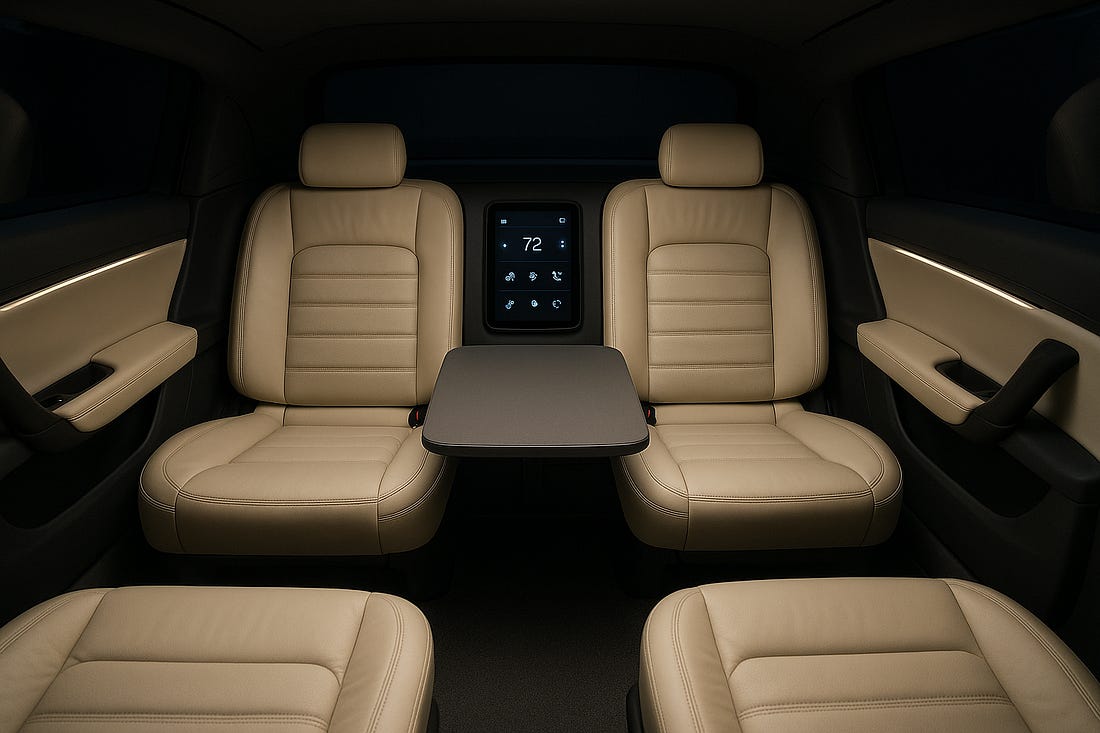The Ghost in the Driver's Seat
I’m a bit of a Bay Area luddite. But yesterday, I finally rode in my first Waymo. I was in awe. The novelty alone was thrilling. But I was even more surprised by the profound sense of privacy. There was no small talk, no assessing someone’s driving style, no tuning out a conversation. I had full ownership over the space and that felt sacred. And yet, I kept coming back to that moving steering wheel…Why? Innovation isn’t radical — it’s iterative. Slowly, over time, small iterations compound to feel like a big jump. The idea of a driverless car seems so novel. But being inside a Waymo made it clear how autonomous vehicles are one incremental step in a long lineage of automotive innovations. The first automobiles were horse-drawn carriages designed to hold an engine instead of a horse. That basic configuration has stayed the same since the late 1800s. Now we have driverless horseless carriages that still leverage the original carriage layout. As a pragmatic designer, I’m in favor of reusing existing, familiar patterns. Getting into a Waymo, I immediately understood the basics: seat belts, windows, door handles, and touchscreen. But it was also still clearly a vehicle designed for a driver. Sure, I could control the music and the temperature. But the windshield was dirty — and while I’m sure the car didn’t care, I did. But I couldn’t run the wipers because those are controlled by “the driver.” And that steering wheel really stood out like a vestigial organ as it rotated around turns… In doing a bit of research, it turns out the original Waymo concept cars were actually very different from traditional cars with no steering wheel, pedals, or really anything besides seats and a touch screen. But in order to pass regulations and increase production, Waymo switched to retrofitting existing vehicles. The Jaguar I-PACE came with all the built-in luxury comforts of climate control, leather seats, and a smooth ride. And I would imagine people inherently felt safer in a familiar, luxury vehicle than a novel, concept car. While this all makes sense, I can’t help but wonder what a truly passenger-centric experience could look like? Some of the first ideas that come to mind for me are:
There are obviously many more possibilities and I’d love to hear your ideas! I truly was delighted by my first Waymo ride. But as a designer, I couldn’t help noticing how little had changed for the person in the back seat. We’ve removed the driver. Now comes the next opportunity: Design the riding experience around the passenger. |
Similar newsletters
There are other similar shared emails that you might be interested in:



